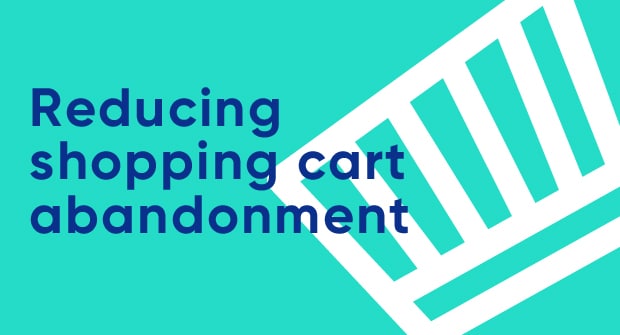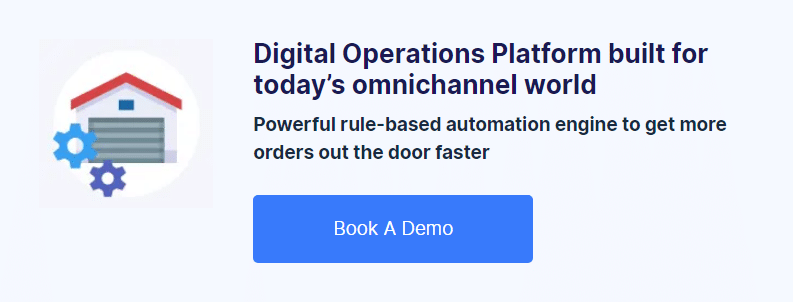Reducing Shopping Cart Abandonment

Introduction
Over 69% of shoppers abandon their carts with products in them, meaning abandoned online carts can be a rich source of revenue. The reasons for abandoning shopping carts are multiple and e-commerce merchants are trying to find ways to re-engage with shoppers to try to finalize the sale. The most common way to re-engage with shoppers is to use shopping cart abandonment remarketing mechanisms.
How to reduce shopping cart abandonment
Shopping cart abandonment processes have evolved as well as the overall understanding about cookies and web analytics. Cart abandonment is not a “bad thing”, but just a reflection of the shopping process. Customers drop items into their baskets as part of the consideration process; comparing options, looking at shipping costs and delivery dates – it has become normal practice.
If this is dealt with effectively, re-marketing allows customer service mentality to re-emerge; re-injecting that “personal touch” into the shopping experience. But the way these processes are implemented is critical. The frequency and sequence of communication sent to shoppers to try to finalize the sale as well as the relevancy of the message sent make this process a success or a failure.
Shopping cart abandonment is a unique opportunity not to be missed – it will help you maximize your revenue while increasing the credibility and trust of your customers.
Using automated emails delivers consistently high returns. In many cases, conversion rates can be as high as 45% for the targeted audience and often shows an increase in cart size. We surmise that the email lingers in their inbox or open on their phone tempting them over and over to return and buy the products.
When should you contact your customers?
Triggering an action rapidly after the abandonment of a cart online will help you recoup potentially lost customers. Timing is the factor that will make the close of your online sale ultimately succeed or fail. An immediate touch of “Can I help you” can make all the difference and drive immediate conversion.
It is all about building trust and showing credibility to your customers, helping them to make the decision to purchase and get them to push their abandoned cart over the payment line.
Include a call back button or follow up SMS to increase conversion rates. When customers are actively researching about products, browsing prices, options and ratings they might not find all the information they require to make a final decision. For example details of a product, the size or the color might not be directly available on the e-commerce site.
With a triggered email you can try to re-open the conversation, or integrate a call back button so they can easily get in touch with your customer service.
One hour later
The timing for sending your first trigger email should be within an hour as customers might have encountered a problem in finalizing their purchase. You therefore need to promptly address the likely reasons for the shopping cart to be abandoned. It helps bring continuity to the buying process and will keep your customers engaged.
One day later
Follow-up with another email to re-assure them, tell them that their abandoned cart is still available online. They still have a fresh picture of the product and their experience on your e-commerce website. This will give your customers the opportunity to go back and possibly make modifications to their saved shopping cart.
One week later
A third email can be sent a week later to inform them of a special discount or offer. Alternatively you can cross-sell by offering other related products or offers. The last email communication is a bit more sales oriented than the previous two emails. Be slightly wary of the discount route as it has been found that a growing group of consumers do this regularly to get the best offers.
How to build an effective remarketing email
Your cart abandonment email should deliver a sense of trust, excitement and urgency, enabling a tangible desire to buy your product. If you follow this emotional engagement closely, your ability to sell will increase dramatically.
The key components of a good shopping cart abandonment email are:
- Sender,
- Subject line,
- Visual reminders of the product(s),
- Personalization,
- Branding, and
- A clear call-to-action button.
Compelling sender / subject line
Re-marketing is about driving sales through a compelling reminder. The email should be branded and recognized as a helping hand; ‘Customer Service’ is a good way to brand your email. The subject line needs to be short, catchy and trigger an immediate reaction. For example: “How can we help you?”, or “Your shopping cart is still with us”.
Clear message about shipping costs
According to Forrester, one of the most important reasons for abandoning carts is costs for shipping and handling being too high. If you are able to address this strong reason for customers to abandon their carts then the chances for you to close the sale will be much higher.
Call-to-actions (CTAs)
Call-to-actions must be clearly highlighted, such as ‘View cart’, ‘Continue shopping’, or ‘Complete your order’. The call-to-action button should be subtle yet strong enough to encourage customers to return to their shopping cart in a seamless way and complete the checkout process.
Returns policy
Having a direct link to your returns policy can help customers to review it and realize how easy it is to send items back. Informing customers about the process of buying with you will encourage them to trust in your brand.
Security
Show on your shopping cart abandonment email that your site and your payment processes are secure. This will help your customers to feel more confident in buying from you.
Customer support
Integrate a strong customer support approach by clearly displaying your customer service phone number or chat service. Better still, integrate a call back button so they can contact your support team directly.
Time notification
When sending the shopping cart reminder, you can create a level of urgency by letting your customers know that the shopping cart is available for a limited time only.
Picture of one of the products
Have a clear visual about the product left in the abandoned cart; ideally your best-selling product should be the one to show.
Personalization
Most email service providers will enable you to customize your email messages with the recipient‘s first name, such as “Dear >, we are saving your cart for you,” or “> save xx% on your order.”
Layout
Shopping cart abandonment emails should be short and compact; enabling key elements to be visible above the fold in order to increase your clickthrough rates. The text needs to be functional and items displayed clearly. Clear branding, friendly images, simple color schemes and highly contrasting call-to-action buttons will stand out. With these aspects in place you stand a great chance of re-capturing the sale.
Conclusion
In a friendly way, introduce how you can help, remind your customers about abandoned items in their cart, and inform your customers about the support you can offer in the checkout process. You can also remind them about items that are selling out fast and create urgency for them to make a decision.
Remarketing campaigns should be something recipients will find useful – the purpose is to get customers to complete checkout and not be pushy or forceful. Shopping cart abandonment is a unique opportunity not to be missed – it will help you maximize your revenue while increasing credibility and trust in your brand for your customers.
This guide was written in collaboration with cloud.IQ, who provide easy to use and affordable conversion tools for businesses who want to increase revenue from their online activity and accelerate their online conversions.

